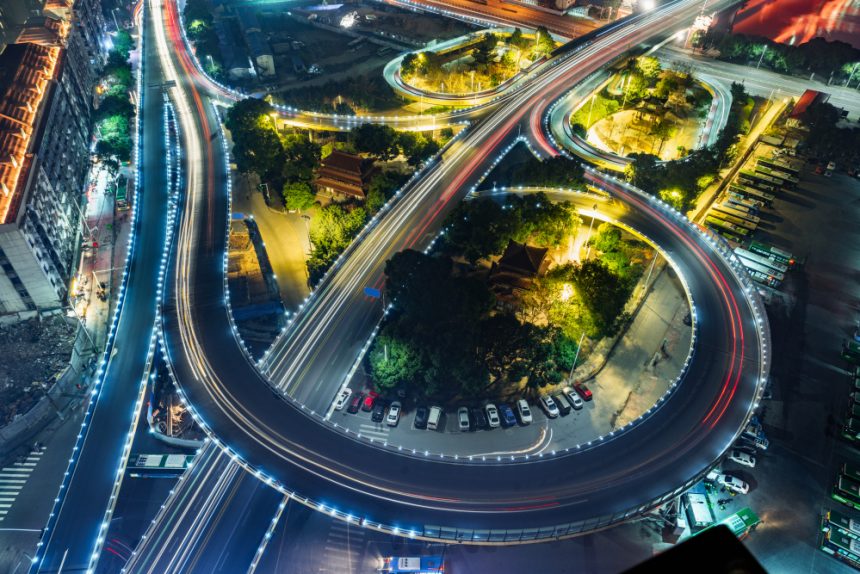Transportation has always been a reflection of human progress. From the invention of the wheel and the rise of steam engines to the development of airplanes and electric vehicles, every major leap in mobility has reshaped society, industry, and everyday life. Today, the world stands at another pivotal point—one defined by digital intelligence, automation, and data connectivity. Artificial Intelligence (AI), the Internet of Things (IoT), big data analytics, and real-time communication are transforming how people and goods move across cities and continents.
In the digital era, mobility has become not only faster but also smarter, safer, and more sustainable. AI algorithms now interpret massive volumes of traffic data to optimize routes and reduce congestion. Electric propulsion and autonomous navigation are changing how energy is used and how vehicles operate. Smart infrastructure, powered by connectivity and data exchange, is rewriting the relationship between roads and drivers.
This convergence of technology and transportation is also driving a profound shift in global connectivity. Seamless mobility services are linking cities through integrated networks that combine public transit, ride-sharing, and freight logistics. Urban planners are using predictive analytics to design greener cities where congestion is minimized, air quality is improved, and transportation systems operate in harmony with environmental goals.
At the heart of this transformation lies automation and intelligence—technologies capable of learning, adapting, and predicting. Self-driving cars and AI-managed traffic systems are no longer theoretical concepts; they are pilot-tested realities in dozens of cities around the world. High-definition mapping, sensor fusion, and machine learning enable autonomous systems to make split-second decisions that once required human judgment. With humans and machines increasingly sharing the road, the boundaries of transportation continue to blur in exciting and sometimes challenging ways.
While the promise of these advancements is vast, they also raise essential questions about data privacy, regulation, equity, and infrastructure investment. The future of travel depends not just on technology itself but on how societies choose to govern and integrate these tools responsibly. The ultimate goal is clear: to create smarter, more efficient, and more sustainable mobility ecosystems that improve quality of life and ensure global connectivity in a rapidly changing world.
The transformation of transportation isn’t only happening inside vehicles—it’s happening beneath and around them. Smart roads and intelligent infrastructures are emerging as critical elements in the modern mobility ecosystem. These systems integrate IoT sensors, real-time data analytics, vehicle-to-everything (V2X) communication, and adaptive design to create road networks that can “think,” “respond,” and “communicate.”
Autonomous and Connected Vehicles
Autonomous vehicles (AVs) represent one of the most profound technological shifts in recent decades. Using AI, radar, lidar, cameras, and GPS, they can interpret surroundings, detect obstacles, and navigate traffic independently. When connected to digital networks, these vehicles can exchange information with other cars, traffic signals, and infrastructure. This forms a collaborative ecosystem where each component—vehicle, driver, and road—shares data to enhance efficiency and safety.
The integration of connected vehicle technology paves the way for dynamic traffic flow, minimized accidents, and smoother urban mobility. For instance, AVs can communicate their position and speed to nearby vehicles, reducing the likelihood of collisions. In freight logistics, autonomous trucks and drones are already optimizing delivery routes, reducing delays, and cutting emissions.
Smart Roads and Intelligent Infrastructure
Parallel to the advancement in vehicles, infrastructure itself is undergoing a radical transformation. Smart roads are embedded with IoT sensors, cameras, and communication nodes that continuously collect and transmit information about road surface conditions, traffic volumes, and weather patterns. This information is shared with control centers or directly with vehicles, allowing real-time adjustments such as dynamic speed limits, automated lane management, or emergency rerouting.
Some experimental smart roads are even exploring energy generation and wireless electric vehicle charging. Through solar panels and inductive charging technology, these roads could help power vehicles as they move, vastly improving energy efficiency and sustainability. When combined with machine learning, such infrastructure can predict where maintenance is needed, preventing potholes and reducing long-term costs.
Data-Driven Urban Mobility and Sustainable Travel
The synergy between smart vehicles and smart infrastructure depends on data—an ever-growing stream of real-time information collected from millions of connected sources. Urban planners and engineers use this data to model traffic behavior, predict demand, and design systems that reduce waste. AI-driven analytics allow public transportation systems to dynamically adjust schedules, and they help ride-sharing platforms optimize their operations to reduce empty trips and emissions.
Sustainability has become a key driver of innovation. As cities struggle with congestion and air pollution, connected mobility technologies offer more than just convenience—they provide tools for environmental accountability. Electric vehicles paired with renewable energy grids, intelligent public transit, and data-driven emissions monitoring all work together to support global climate goals.
The Human Experience and the Road Ahead
Beyond the technical aspects, these innovations are redefining the human experience of travel. The notion of driving may evolve into supervising; commuting may become a time for relaxation, work, or social interaction. Smart roads that adjust lighting based on traffic density or autonomous shuttles that respond instantly to demand can make mobility more inclusive and personalized.
However, the success of this transformation depends on collaboration among governments, technology developers, automakers, and citizens. Cybersecurity, ethical AI governance, and equitable access must be prioritized to ensure that advanced transportation systems benefit everyone, not just the technologically privileged.
In the coming decades, vehicles will become rolling data centers and roads will evolve into intelligent ecosystems capable of sensing and responding to human needs in real time. Together, autonomous technologies and smart infrastructure are ushering in a new era of transportation—one defined not only by speed and convenience but by intelligence, sustainability, and the shared vision of a connected future for all.






